- Home
- Alistair Moffat
The Secret History of Here Page 21
The Secret History of Here Read online
Page 21
Coming back home to live in the Borders was more of a reflex than a conscious choice, but it is good to be refreshed by other worlds, different climates and cultures. Until I first travelled west to the Highlands and Islands as a teenager, I had always associated the seaside with ice cream, candy floss, sandy sandwiches and amusement arcades. Each summer the churches in Kelso organised Spittal Trip for the children who attended their Sunday Schools. Spittal is a small seaside resort with a long sandy beach near Berwick-upon-Tweed. In the weeks prior to the trip, attendance at Sunday School was never less than perfect.
This excursion bore all the lineaments of Victorian charity – a day out at the seaside for children too poor to have holidays – but it was wonderful, the exuberant joy of an old-fashioned excursion rising above Presbyterian propriety. Each church’s Sunday School gathered early in the morning of the appointed day and cardboard lapel badges were handed out, as if we were wartime evacuees. Packets of coloured streamers were issued to older children and we marched uphill to Kelso station, where the special train waited, puffing and huffing before it clanked eastwards. We all cheered as it picked up speed. The small top windows were slid open and the streamers jammed in. Building anticipation, competing to be the first to see the sea, we cheered again as we passed every village station: Sprouston, Carham, Cornhill, Twizel (where a spectacular and scary viaduct crossed the River Till), Middle Ord, East Ord and finally Tweedmouth station. Marshalled once more in military order, we marched first to Spittal’s church halls, where we lined up to be given brown paper bags of buns, a chocolate biscuit and sandwiches, as well as a split of Middlemas’ lemonade (plain). And then we marched down to the beach. Dog-collared, black-clad ministers and kirk elders ensured that there was some decorum and not too much shrieking when children splashed into the chill North Sea.
I have a photograph of myself with my sisters and Ronnie and Suzie Taylor sitting amongst the deckchairs, all wearing overcoats and cardigans, lapel badges dangling. It is sunny, but it must have been a cold day. Every face is wreathed in smiles. Charity certainly, but very cheerful.
9 July
Poison lines the Long Track. Some of what I had previously believed to be cow parsley turns out to be hemlock, what Socrates used to commit suicide. This morning I took my Collins Gem guide to wild flowers with the intention of identifying a clump of very pretty white flowers by the side of the Top Track (stitch-wort, not sure if Greater or Lesser). When Maidie and I turned down the Long Track, I looked up the cow parsley family (they are basically carrots) and, flicking through the pages, I recognised hemlock growing by the fences of the grass parks. It has feathery leaves and a purple stem, and it smells bad.
After early morning rain, scents swam in the warm air: honeysuckle by the Wood Barn, pine everywhere, the bitter odour of new leaves in the hedgerows and, because there is so much of it, the faint smell of elder blossom drifted over the track into the Deer Park. The thistles were beginning to put out their purple crowns. They have a sweet smell and, more surprisingly, they are part of the daisy family, something that does not quite chime with the thistle’s spiky role as an emblem of spiky Scotland.
10 July
Yesterday evening an aerial battle raged in the skies above the stables. Because their first broods of chicks have hatched, squadrons of swallows were sallying out to see off crows who had approached too close. Using their extraordinary speed and agility, these little birds buzz the black crows like spitfires attacking bombers. Another patrol saw off a kestrel so that the no-fly zone was not breached.
The day dawned with heavy rain, giving way to a close, muggy, moist air, the perfect atmosphere for midges, tics, clegs and the myriad biting insects that thrive in these conditions. Outside the window of my office is a cotoneaster bush in full flower and the drone of a hundred wasps is audible as I write this. There seem to be more bees this summer, and we must learn to love not only them but all our pollinators, whether or not they bite or sting.
11 July
The loud cracking and whumping became immediately audible at Windy Gates. A tree harvester, a vicious, predatory monster of a machine, had cut a wide swathe through the wood around the Haining Loch and trees were being felled at industrial speed. Many decades of growth brought crashing down in seconds. In 2009 the Haining House and stables, 160 acres of woodland around it, and the loch were gifted in his will by Andrew Nimmo-Smith, a descendant of the Pringle family who came here at the beginning of the eighteenth century, to the people of Selkirk and Selkirkshire. The policies had not been well maintained and the wood around the loch certainly needed to be thinned, but the clear-felling is a savage process. The sound of the harvester spooks our horses, making them hard to catch in the evening.
I hope they leave the hardwoods on the margins of the wood, especially the stand of scented sweet poplars in the corner by the Deer Park track.
12 July
By the end of yesterday afternoon, many of the trees at the southern end of the Haining Loch that used to border our land had gone. This morning the effect was very dramatic, opening up vistas that had been closed for many decades, revealing much that had been hidden. The cutting of healthy trees always vexes me, but, after standing for a long time looking at the nature of the changes, I decided that it was for the best.
For many years the woods had not been managed and were choked with self-seeded trees. Most of these were scruffy sitka spruce, many of them spindly, as their tops struggled to reach up through the tangle to the light. They are certainly not an adornment, but I was sad to see that the stand of sweet poplars had gone and I shall miss their metallic scent next spring. Woodpeckers often drummed on the bark of older, half-fallen hardwoods in that corner and I am sad that they too have been cut. These busy little black and white birds will need to seek new stores of insects. As Maidie and I surveyed the revelations of the cut wood in the sort of silence that might have followed a battle, I saw a stoat darting in and out of the logs, working out the radically new geography of his territory.
Once it is complete, the cut logs removed and the brash burned, I think the felling will open up a new landscape and show off its gentle beauty better. Dense woods of sitka tend to close down the shape of the ground, blanking off wide areas, burying them in sterile darkness, making them impenetrable. But now the ancient bounds of the Deer Park are much clearer, with the enclosing bank and perhaps a deer-leap revealed, if it is not ripped to pieces by the caterpillar tracks of the harvester. I shall have a closer look when the monster machines depart.
We can now see from Windy Gates how all of the trees we planted on the western slopes of the Deer Park are growing, what sort of pattern they will make when mature. The loch is now clearly visible rather than just a glint through the leafless trees in winter, and at its far end we can see the foursquare shape of the Haining, its Georgian symmetry very pleasing against the fluid lines of the landscape. It looks like a view of a new aristocratic mansion commissioned from Canaletto. The pellucid waters of the loch set off the upright mass of the house and the trees look as though they have been artfully arranged to frame it. Next to it stands a marquee, no doubt much used for weddings, a booming trade. Fooled by their satnav, or perhaps just fools, several sets of guests have driven down our track looking for champagne and canapés, thinking that our humble farmhouse is the Haining.
Just as Maidie and I turned for home, the morning sun lit the cut wood, its rays splashing yellow over the piles of logs and the revealed ground. It will have been many, many years since such a brilliant light warmed the sterile slopes where the sitka grew.
13 July
More poison is growing along the margins of the Top Track. Several small stands of ragwort, highly toxic for horses, will have to be dug up before it flowers. Because the sap from the stems causes a very angry skin rash, gloves will be needed. The warmth and wet of this July are creating a temperate jungle where everything is flourishing, bad and good, and I am relieved to be irritated, at last, by the flies. They are e
verywhere and we have never seen so many bees. Yesterday evening we sat outside on the terrace, where Lindsay has planted many lovely little shrubs amongst the paving. One is particularly beloved by the bees and perhaps twenty were harvesting the pollen, tiny lumps of it sticking to their legs. Driving up the Long Track puts up more butterflies from the verges than last year, particularly red admirals. Perhaps fewer species of insects are dying than is predicted.
Yesterday afternoon a huge truck came barrelling down our track, stopping outside the farmhouse, the driver thinking he was going somewhere else. Misled, yet again, by satnav, he had great trouble turning his belching leviathan and he rutted the tracks as his vast tyres ripped through the gravel. Action was overdue and I drove immediately to Gala to have large signs made. They will be planted prominently at Windy Gates and, leaving aside the precise wording, the basic message will be ‘BUGGER OFF’.
15 July
Early on an autumn morning in a quiet meadow east of Selkirk, two men faced each other, their swords drawn, their tempers flaring. A duel had been sparked by the greatest, most weighty political issue in the nation’s history, one that drove deep disagreement into passionate hatred. One that still simmers in the twenty-first century. Mark Pringle of the Haining, the youngest brother of the laird, John Pringle, believed absolutely that the Union of the Parliaments of Scotland and England and Wales was not only in the best interests of both countries but also of his family. Glaring at him across the dew-soaked grass was Walter Scott, Laird of Raeburn, and a distant ancestor of Sir Walter Scott, the great novelist and poet. He had been raised by another Walter Scott, known as Beardie because he refused to shave until the Stuarts were restored to the throne of Great Britain and Ireland.
On the evening before the duellists met in the meadow there had been a meeting in Selkirk to discuss the business and government of the county. On 2 October 1707, lairds, burgesses and other men of importance had ridden to the county town to make their views known, probably to John Pringle of the Haining. He had been elected MP for Selkirkshire to the old Scottish Parliament in 1703 and had been transferred to the new one at Westminster in 1707, one of only forty-five Scottish representatives. The parliament of the United Kingdom had convened on 1 May and it may be that Pringle planned to say something of its workings, the opportunities and perhaps the difficulties. No minutes were recorded for the meeting of 2 October, but another similar gathering was arranged for 28 October and a record of what was discussed has survived in the Walter Mason Papers. Money, the amount and rate of taxation for the county to be collected, was the main subject for discussion and decision, as were the excise duties to be levied. Matters were complicated by the different values of the pounds Scots and the English, or pound sterling.
After the business was concluded on 2 October, the lairds and the other notables sat down to dinner in one of Selkirk’s inns and a session of heavy drinking followed. As the ale and claret flowed, a furious disagreement erupted between Walter Scott and Mark Pringle. Very few details survive, most of them little more than much-repeated and embellished rumour, but it seems that both parties eventually became so drunk that tempers cooled. In fact, all the sources agree that neither man could remember anything about the quarrel, except that there had been a quarrel.
Early on the following morning a peculiar, arcane ritual was enacted. No doubt hungover, bleary eyed and tired, Scott awoke to discover something that sounds very odd, that he had ‘bitten his glove’. This signified that some deadly insult had been thrown at him by Pringle as bottles and tankards were drained after dinner. Even though Scott could not remember what the insult was, it needed to be avenged; he had to have satisfaction. The business of the bitten glove is explained in Sir Walter Scott’s The Bride of Lammermoor. A variation on throwing down the gauntlet or slapping an opponent’s face with a glove, it meant that Scott of Raeburn had pulled off his glove with his teeth. That somehow proved that a deep offence, which no one could remember, had been flung at him by Mark Pringle, and only blood could avenge it.
To add even more confusion, other versions of the story have Pringle recognising that his glove had been bitten and then galloping from the Haining to Galashiels to call out Scott from the house of his brother-in-law. However all that may be, two young men, accompanied by their seconds and probably some others who had been at the fateful dinner, confronted each other in the meadow. As they drew their swords, it seemed that the past was confronting the future. A supporter of the Stuarts, of a return to Catholicism, of a much more absolute monarchy, was about to contend with a man who believed in limiting the power of kings and in the good sense of uniting the parliaments of Scotland with that of England and Wales.
The duel began with flurries of swordplay, both men apparently being experts with the small sword, a sort of rapier with a very sharp tip. At first only steel clashed and no blood was drawn. After a time Mark Pringle called for his opponent to desist, reminding Scott that he was married with three young children and, since honour had surely been served, what point was there in continuing a dangerous contest. Taking that as an insult, Scott would have none of it and the fighting intensified. And then, in a moment, it ended. Having parried a stroke and thereby brought his opponent’s guard down, Pringle lunged forward and drove his small sword through Scott’s body. Those watching gasped. Drawn blood from a cut would have been a sufficient sign of victory, but death was a shocking, unlooked-for outcome.
As Scott lay on the grass, bleeding to death, Pringle fled first to the Haining and then rode hard to Leith, where he took passage on a ship bound for Spain. The Borders was scandalised at Walter Scott’s killing, no matter the circumstances or the pleas to desist, and criminal charges would undoubtedly have been brought. Exiled for more than thirty years, Mark Pringle eventually followed the example of many younger sons of landed families. He set up as a merchant (perhaps with the help of his elder brother) and in 1738 returned to Scotland a wealthy man. Old scores were certainly not settled, for no prosecution was brought, but Pringle had the good sense not to come back to the Borders. His fortune enabled the purchase of the Crichton estate in Midlothian.
In 1765 a complex legal wrangle riddled with contradictions, claims and counter-claims began. When Mark Pringle died, he left the bulk of his estate to his eldest son, John, but following a deathbed instruction he attempted to settle £1,000 on his youngest son, Mark. John objected to this and the case dragged on through the Court of Session for some considerable time. Then fate and fortune took another twist. Through the accidents of inheritance, a lack of direct heirs and a premature death, Mark Pringle (jr) took possession of the Haining estate in 1792. With the eager help of architects, he began to think about how a new and grander house could replace the old mansion at the head of the loch. And it seems that he also had a smaller, but apparently very immodest, house built.
When Lindsay and I first came to look at the cottage we later enlarged into the present farmhouse, we noticed a heavily weathered sandstone plaque above the lintel of the front door. It read Marc. V. Pringle 1821. And so it would seem that the son of the murderous duellist had our house built. Or did he? And why? As often happens, one story pulls aside a curtain to reveal others, some of them very unexpected.
16 July
Talking this morning with the foresters who are cutting down the wood around the Haining Loch, I was pleased to hear that the badgers had been successful in their parliamentary lobbying. Legislation to protect them has come into force. A colony of these little grey bears has dug a labyrinthine sett on the edge of the wood and under the fence that is our boundary. Exposed by the removal of the trees around it, the scale of the sett is much larger than I thought, about thirty yards by ten, and the earth excavated by the powerful claws of these creatures had mounded up above the fence posts. Because their breeding season began in late February and their cubs are beginning to emerge, the foresters have ringed the sett with a twenty-metre exclusion perimeter. The huge harvester cannot work there because its weig
ht would have crushed the tunnels and sleeping chambers, so the trees will have to be cut with a chainsaw. What the badgers will do when they see that the comforting cover of the night wood has disappeared, I don’t know.
18 July
Tabitha Twitchit is coming. Rather than stepping out of the pages of Beatrix Potter, a real tabby cat is coming to deal with the rapidly rising rabbit and mouse population. Unlike the original, we hope this cat will not be mumsy and kind but savage, a hunter, or at least one with a strong scent that will discourage the multiplying bunnies and mice. Her prowling around the house will send Maidie into transports of rage, but not for a while. Tabitha is still a suckling kitten, the epitome of cute, and when she is weaned in a few weeks’ time she will live at first in one of the empty stables.
19 July
When Andrew Pringle bought the Haining estate in 1701 for his son, John, he made him more than a landowner. In order to become an MP, a substantial property qualification was necessary. And to make the investment worthwhile, great opportunities appeared to lie just over the political horizon. John was duly elected in 1703 as the member for Selkirkshire.
After a series of severe crop failures and near-famine in the 1690s, and the catastrophic failure of the Darien scheme, Scotland’s attempt to found a colony in Panama, the pressure for parliamentary union with England, Wales and Ireland intensified. Most Scots were against it, and it became clear that if the merger went ahead there would be no general election for the new parliament. It was deemed too risky to allow even the tiny minority who could vote to express their preferences, and during any election the much-feared Edinburgh mob would take to the streets. Instead some MPs already sitting in the Scottish Parliament would simply move to Westminster, as John Pringle had.
When all of this duly played out and Pringle took his seat, the MP was given the lucrative office of Keeper of the Signet in 1711 and also prospered in other ways. To overcome objections to the principle of union, a large cash sum was paid to Scotland, in effect to those MPs and others who ran Scotland. Known as the Equivalent, it was described as compensation for taking on a proportion of England’s national debt. In reality, it was a large bribe that was distributed amongst the elite. Perhaps the Equivalent and the benefits to the Pringles of sitting in the Westminster parliament sharpened Walter Scott of Raeburn’s resentments.

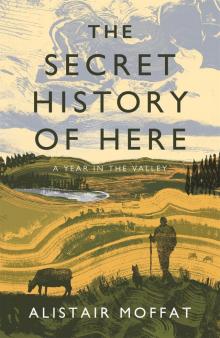 The Secret History of Here
The Secret History of Here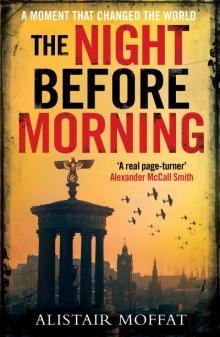 The Night Before Morning
The Night Before Morning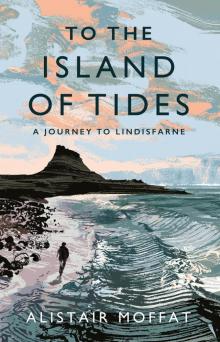 To the Island of Tides
To the Island of Tides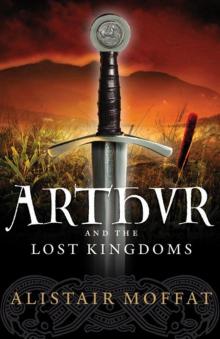 Arthur and the Lost Kingdoms
Arthur and the Lost Kingdoms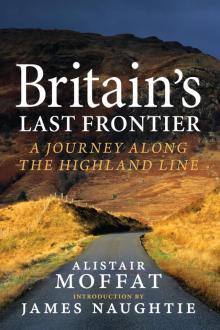 Britain’s Last Frontier
Britain’s Last Frontier The Faded Map: The Lost Kingdoms of Scotland
The Faded Map: The Lost Kingdoms of Scotland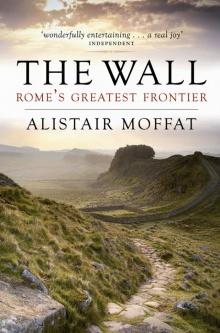 The Wall
The Wall